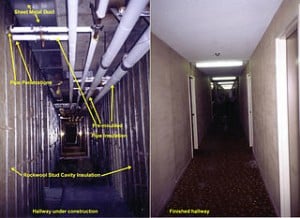It’s what’s inside that counts
In this epoch of climate change (global warming) awareness, one of the constructs associated with this phenomenon, is “carbon footprint,” and what this means or how it relates on an individual or per-person level.
As this relates to Air Quality Awareness Week – 2016, some may want to know how they can reduce carbon footprint size inside the living space.

From the “Earth Day – 2016: Ideas for a healthier Earth” Air Quality Matters Apr. 1, 2016 blogpost, I offered: “Secondly, keeping lights off when not needed, can save on electricity by placing less demand on the electric grid and that means lower energy costs. The same is true regarding appliances and electronic devices like computers, for example. By turning these off when not in use, this can do much to reduce energy use. Meanwhile, replacing incandescent with fluorescent lighting or either incandescent or fluorescent with light-emitting-diode lamps, such should prove to be less of a load on the electric grid, and that should translate into energy costs being lower.”
This is just scratching the surface. Gar Lipow, in his book, Cooling It! No Hair Shirt Solutions to Global Warming really delves deep into this area. Provided in this detailed accounting is a wealth of smart solutions that can help people reduce their watt-hours of electricity consumption. Moreover, as to what Lipow covers, it’s all good and if many of the “solutions” this author presents were adopted universally, I cannot help but think of how much more of a positive impact this would have on the quality of air.
Another good resource which I have referred to from time to time is: “30 Simple Energy Things You Can Do To Save The Earth,” from The Earth Works Group, Distributed by Pacific Gas and Electric Company.

Of course, not all 30 “things,” if followed through on, are going to directly result in air-quality improvement, but a good many do, such as setting thermostats at sensible levels; neither too cold during summers nor too hot during colder times of the year. Another is making the home more energy efficient and one way to do this is with improvements made regarding interior, exterior and even attic insulation. These and more useful tips are covered within this guide’s covers.
And, the two above-described books are but two resources. There are others.
Now, as to what the future of home carbon-footprint reduction may hold, there is no telling what is in store. But, it is interesting to think about the possibilities.
I think of my own kitchen that has a built-in exhaust fan located over the cooking surfaces of the stove. Imagine if one were to step away from the stove say, in answering a phone, while food in a frying pan, for instance, on top of one of the stove’s heating elements gets too, too hot and produces enough smoke as a result. Meanwhile, placed inside the exhaust fan is a built-in smoke detector provision which, if triggered, would automatically shut off the stove’s heating element in question thus preventing what is in said frying pan from reaching the flash point and therefore eliminating the threat of fire. This day is no doubt on the way. No question a capability of this type would doubtless be extremely practical and handy in a situation where someone has lost consciousness due to a medical crisis while the stove just happened to be on. What other kinds of air-savings techniques are just around corner?
This covers the home’s inside. Part 3 goes outdoors at home.
– Alan Kandel